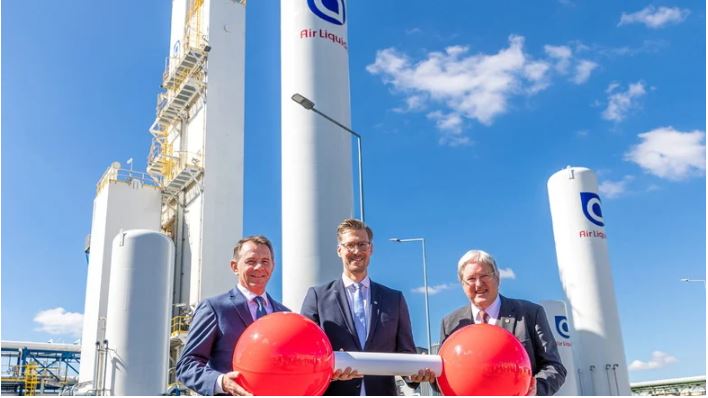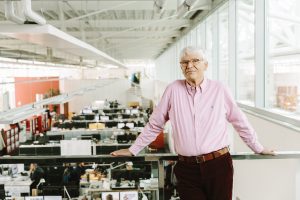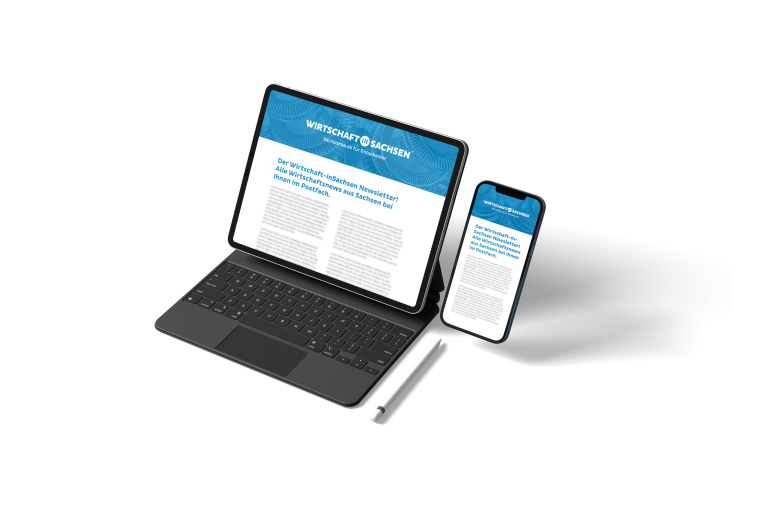By Irmela Hennig
Is business tax revenue bubbling up in the southern Brandenburg town of Schwarzheide? Mayor Christoph Schmidt shakes his head. Although the head of the town has signed a contract with the chemical company BASF an economic heavyweight in its community. And on Monday, industrial gas specialist Air Liquide officially launched a new air separation plant at BASF's industrial park. 40 million euros has been invested. "But because of the energy crisis, companies are hardly making profits at the moment," Schmidt explains. The chemical industry in particular has been struggling in recent months with very high gas prices and reduced demand for its products.
Nevertheless, at the inauguration of the Air Liquide plant in Schwarzheide, there were only smiling faces under the light blue sky dotted with tiny clouds. After all, the decision had been made to locate the plant in Brandenburg, as the local Minister of Economics Jörg Steinbach (SPD) emphasized in his welcoming address. First of all from BASF. The company recently opened Germany's first factory for cathode material in Schwarzheide - which is needed to manufacture batteries as a building block for the energy transition. Now Air Liquide is following suit. The French company has now set up tanks and technology on 12,000 square meters of land, laid raw pipelines and 25,000 meters of cable, and produces various gases on site. Above all, it produces carbon dioxide-free compressed air - exclusively for its long-standing customer BASF. BASF needs the substance for the production of its cathode material. Oxygen and nitrogen are also produced. There are other customers for this, for example in the food, automotive and metal sectors.
In addition, in the semiconductor industry - there are also companies in Dresden such as Globalfoundries, Infineon and Bosch. These are mainly supplied by Air Liquide Electronics in Ottendorf-Okrilla, Saxony, with 75 employees there. But "Schwarzheide becomes the backup to supply our customers with liquid oxygen and nitrogen, among other things," says Wolfgang Steiner, managing director of the site there. So Schwarzheide is something of a backup. Steiner would also supply gases to the possible new Dresden semiconductor producer TSMC sell: "If that's what he wants." The location in Ottendorf-Okrilla has been there for about 17 years.
Customers are located in almost all federal states
Air Liquide's customers in Schwarzheide are located in almost all of Germany's federal states and possibly also in Poland in the future, as Sebastian Jureczek says; he is the managing director of Air Liquide Germany with around 3,750 employees. The company has been present in Schwarzheide since 1995 and has produced nitrogen up to now, mainly as a partner of BASF. The Air Liquide team there will grow by four to 13 people with the new plant, according to a press spokeswoman. In the chemical industry, many processes are digital and automated, she says, explaining the small team. Founded in 1902, the company employs 67,000 people in 73 countries worldwide. According to the company, it is the world market leader in gases, among other things. The spectrum ranges from A for ammonia to X for xenon. In Germany alone, Air Liquide supplies oxygen to more than 200,000 patients in home care. Every second German hospital receives medical oxygen from Air Liquide. There are also customers in the aviation, beverage and energy industries. In 2022, the group as a whole reported sales of more than 29.9 billion euros.
In Schwarzheide, the company has now used construction field F 500 to grow. The construction of the new "block," as the whole thing is called, took 24 months. 320,000 man-hours had been worked, at peak times by up to 300 construction workers and other forces. Ambient air is now drawn in, cleaned, compressed and cooled on site. In the heart of the dismantling plant, the cold box, the air is liquefied at minus 180 to minus 190 degrees. In Schwarzheide, it is transported to BASF via pipelines. Otherwise, tank trucks are used.
According to Jureczek, there are around 100 air separation plants in Germany. The one in Schwarzheide - built without subsidies - is one of the big 20. Air Liquide itself operates 22 such facilities at 15 locations nationwide, according to its own information. The CEO confirms the complex is "designed for future steps. An expansion of production is possible." Brandenburg's Minister of Economic Affairs, Steinbach, would like to see this happen, also in view of BASF. Its Schwarzheide boss, Jürgen Fuchs, remained reserved in his response, saying that it could be discussed later. Schwarzheide's Mayor Christoph Schmidt but confirms that the BASF industrial park could grow. The city is also developing another industrial park on 120 hectares of land with the municipality of Schipkau. The interest of potential settlers is enough to fill an area twice as large, he says.








